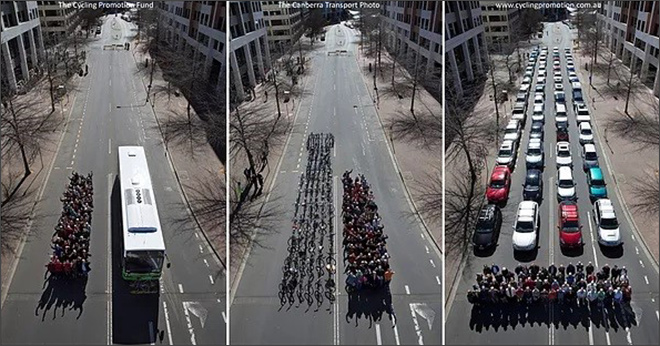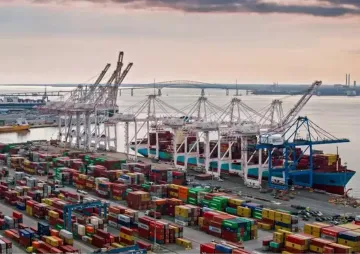
Indian commuters spend more time travelling than the average commuter elsewhere in the world, according to a recent study on arterial roads in 6 Indian cities. On regular and toll roads alike, the traffic congestion in Indian cities is so much that a commuter spends hours in her car, in crowded city buses or in taxis that struggle to find their way home. Due to rising instances of gridlock and falling vehicular speeds on almost all major thoroughfares in Indian cities, it is time we revaluated the economic value of public roads in India.
Though roads are public goods, urban roads are valuable real estate that provide connectivity to different parts of the city and make services and amenities accessible to citizens. Thinking of roads through a real estate framework, one can apply the principles of economics for road usage. Current road tax structures in India fail to apply economic principles to road usage. Road taxes in the country are currently based on vehicle class and vehicle usage and do not adequately reflect how public roads are utilised. To understand congestion charging, we first need to make a distinction between vehicle tax, tolls and a congestion charge. In India, road taxes are paid annually or at the time of vehicle purchase. These taxes are levied on vehicles depending on size and weight and vary according to different state laws. A toll is a charge paid to use an upgraded road that will make the commute both easier and faster.
Roads as a public good
It is the need of the hour to implement road usage charges depending on their vehicular footprint, that is how much of road space a user occupies during her/his commute. Optimal road usage occurs when the road is filled with vehicles which are cruising at the designated speed. However, any extra vehicle added to this road reduces the speed of all the other vehicles on the road. A congestion charge is paid in order to use a congested road, usually by a user who is contributing to additional congestion on the road. A typical pictorial representation of road usage goes this way:
Figure 1: Road space for 69 people
 Source: https://www.cyclingpromotion.org/
Source: https://www.cyclingpromotion.org/
The picture depicts the road space occupied by 69 people in a bus, on bicycles, and in cars respectively. Going by this picture, we can clearly see that the higher the number of people in private vehicles, higher the road space occupied and higher is the possibility of congestion on the roads. This fact is demonstrated on Indian roads when we look at road space occupancy as reflected in recent figures from Mumbai. According to a December 2018 report by the Mumbai Environmental Social Network, the road space occupied by private vehicles has risen from 59 percent to 77 percent in the last two decades alone, with cars and SUVs occupying 49 percent of the space and two-wheelers occupying 28 percent. The road space occupied by buses has reduced from 6.2 percent to 2.2 percent in the same period.
The size of cars on Indian roads varies from three metres to seven metres, accommodating one to seven passengers; whereas the average size of a city bus is 14 metres, accommodating a 60 to 100 passengers. Congestion as a result of the increase in private vehicles has led to the overall reduction in speed of BEST buses from 16 km/hr in 2008 to 9 km/hr in 2018.
Higher congestion charge on a lower occupancy vehicle
By keeping roads equally accessible to all users, the majority of the carriageway is filled with private vehicles, thereby reducing the space available for public transit. This causes an unequitable scenario where a majority of public transit users are inconvenienced at the expense of a select few users of private vehicles.
A congestion charge on private vehicles can be a way of equalising road space usage. In India, road taxes and toll are collected from users but currently there are no user charges that directly correlate to the road usage footprint. Congestion charges have been successfully introduced and used in cities like London, Singapore and Stockholm. These cities charge private vehicles to enter congestion zones in certain densely occupied and gridlocked city spaces like the inner city area. The average commuters in London experienced benefits in the form of increased road speeds, reduction in air and noise pollution, reduction of traffic in the area where the charge is levied and the highest bus ridership figures in 2011, after the congestion charge was introduced in 2003.
The aims to introduce a congestion charge are to:
- Reduce private cars (space inefficient) on roads to make more carriageway for public transit available.
- Convert car users to using public transit
- Improve the ease of living quotient of the citizens by giving them speedier and more reliable public transit options.
- Improve the air quality index and reduce noise pollution levels of the city by reducing the excessive use of private vehicles
Introducing Intelligent Traffic Management System
There are different systems currently used for implementing congestion charges like a central city cordon (London, Stockholm) or using an Electronic Road Pricing (ERP) system as seen in Singapore. The methodology used for implementing congestion charges varies depending on city morphology and type—whether it is radial, liner or grid-planned. For large Indian cities like Mumbai, Delhi and Bengaluru that witness daily traffic snarls, an ERP system of implementing congestion charges would work well. Such a system will take into account traffic movements on major thoroughfares during peak times. The initial investment of such a system can be very high, and it utilises a system of gantries, sensors, number plate scanning cameras and an in-vehicle unit like an RFID-based tracker to work.
Recently, there are several intelligent traffic monitoring systems which have been installed in Indian cities for general traffic management and intercepting traffic offences like speeding or improper junction usage. However, the ITMS (intelligent or smart traffic management systems) use similar technology to that of the ERP. An ITMS is proposed for implementing a smart and centralised traffic management in Mumbai at a proposed cost of INR 891 crore. If the ITMS is calibrated to act as an ERP system, it will save a considerable amount of time and effort of implementing another ERP system for Mumbai at a much later date.
An ITMS can be used for:
- Dynamic, real time congestion pricing
- Analysing congestion patterns on city roads
- Map peak time traffic directions
- Provide dynamic data to the central control system about road closures or traffic incidents
- With the FASTag becoming mandatory for all road users across the country, it can be used as a cashless system to collect automatic congestion charges without human interaction that often lead to delays.
In the future, if the FASTag and ITMS are linked to the users’ cars via a mobile app, it could be possible for users to decide on which route to take on their commute: the shorter, highly congested hence heavily charged route or the less congested route which could be longer than their original route, but reach at the same time due to moving traffic.
Conclusion
With huge infrastructure investments being made in public transport in several Indian cities, it is time to think about congestion charging as a policy tool to encourage more users to turn to public transit. Other policy and structural measures like putting restrictions on the number of taxi and auto rickshaw permits, implementing a BRTS system, encouraging traffic management by removing road and intersection obstructions through good design and providing good quality public transport, will help resolve gridlock and keep Indian cities on the move.
The views expressed above belong to the author(s). ORF research and analyses now available on Telegram! Click here to access our curated content — blogs, longforms and interviews.




 Source:
Source:  PREV
PREV


